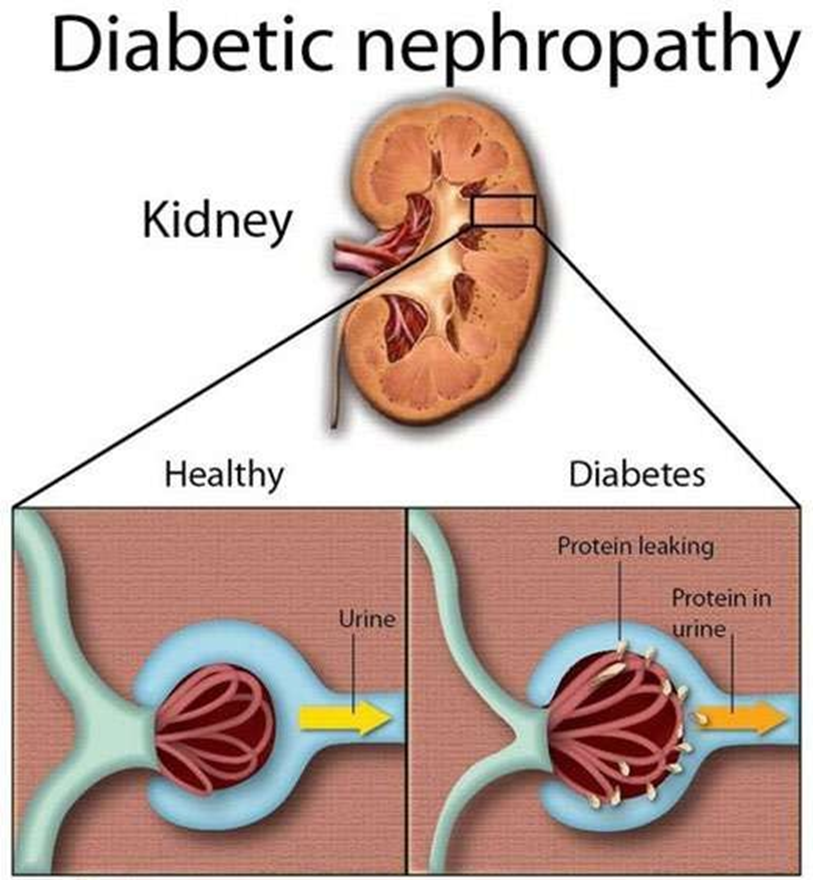A nurse is providing dietary teaching to a client who has nephropathy secondary to diabetes mellitus and plans to
make dietary adjustments. Which of the following instructions should the nurse include?
Eat at least 45 g of fiber per day.
Consume less than 0.8 g/kg of body weight of protein per day.
Eat no more than 300 mg of cholesterol per day.
Consume less than 45% of total calories from carbohydrates per day.
The Correct Answer is B
Choice A reason: While fiber is important in a diet, recommending at least 45 g per day does not specifically address the needs of a patient with diabetic nephropathy.
Choice B reason: Consuming less than 0.8 g/kg of body weight of protein per day is recommended for patients with diabetic nephropathy to reduce the workload on the kidneys.

Choice C reason: Limiting cholesterol intake to 300 mg per day is a general recommendation for heart health but is not specific to diabetic nephropathy dietary management.
Choice D reason: The recommendation to consume less than 45% of total calories from carbohydrates is not specific to diabetic nephropathy, and carbohydrate needs can vary based on individual energy requirements.
Nursing Test Bank
Naxlex Comprehensive Predictor Exams
Related Questions
Correct Answer is ["A","E","F"]
Explanation
Choice A reason: Postvoid urine residual measurement is a direct method to assess for urinary retention.
Choice B reason: Blood urea nitrogen (BUN) levels may indicate kidney function but not specifically urinary retention.
Choice C reason: A cystourethrogram is used to visualize the bladder and urethra, which may not be the first choice for assessing urinary retention.
Choice D reason: Creatinine levels indicate kidney function but not urinary retention.
Choice E reason: A kidney, ureter, bladder (KUB) x-ray can show the size of the bladder and may indicate retention.
Choice F reason: A bladder scan is a non-invasive way to measure the amount of urine in the bladder and assess for
retention.
Correct Answer is ["A","C","E"]
Explanation
Choice A reason: Proper hand hygiene is essential before connecting the tubing to the catheter to prevent infections, which is a key component of CAPD management.
Choice B reason: There is no requirement to lay down while the dialysis solution dwells in the peritoneal cavity. Patients can move around and continue with their daily activities.
Choice C reason: Regularly weighing oneself is important to monitor fluid balance and the effectiveness of the dialysis, making it a crucial part of home dialysis management.
Choice D reason: CAPD typically involves multiple exchanges throughout the day, not just one instillation at bedtime.
Choice E reason: Monitoring blood pressure is important for managing fluid balance and cardiovascular health in patients on dialysis.
Whether you are a student looking to ace your exams or a practicing nurse seeking to enhance your expertise , our nursing education contents will empower you with the confidence and competence to make a difference in the lives of patients and become a respected leader in the healthcare field.
Visit Naxlex, invest in your future and unlock endless possibilities with our unparalleled nursing education contents today
Report Wrong Answer on the Current Question
Do you disagree with the answer? If yes, what is your expected answer? Explain.
Kindly be descriptive with the issue you are facing.
